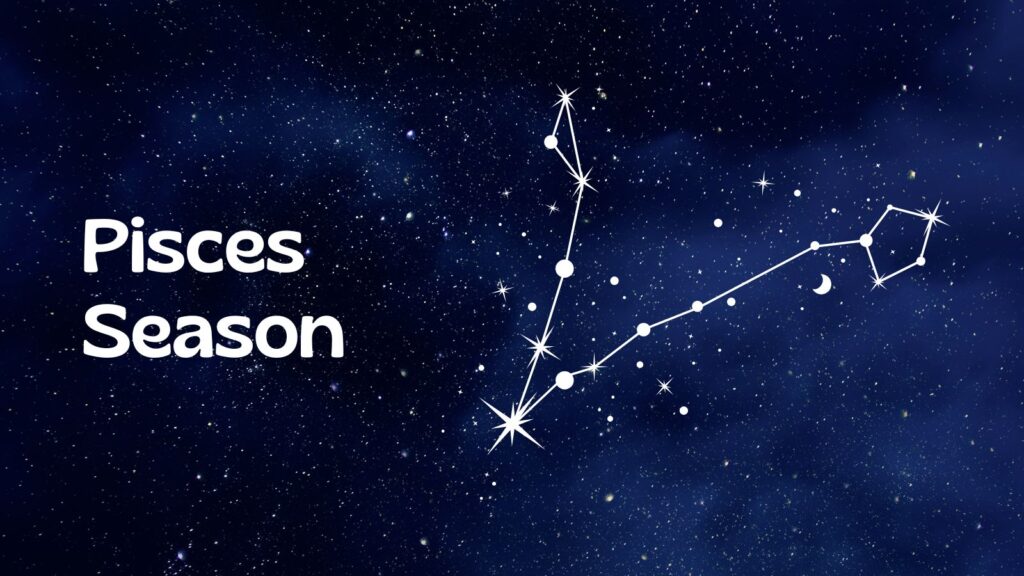The Colorado River toad, or Bufo alvarius, is native to northern Mexico and the southwestern United States. Its entheogenic use has become increasingly popular recreationally and in ceremonial settings due to the presence of several psychedelic tryptamines in the toad’s venom, including 5-MeO–DMT and bufotenin. 5-MeO-DMT is the most powerful naturally-occurring serotonergic psychedelic, approximately 4 to 6 times as potent as N,N-DMT (N,N-dimethyltryptamine). Although 5-MeO-DMT is found in several South American plants and in synthetic form, the Colorado River toad’s venom is the only known animal source of this incredibly powerful psychoactive compound.
What is a Colorado River Toad?
Of the more than 200 Bufo species, Bufo alvarius is the only semiaquatic amphibian that lives solely in the Sonoran Desert, hence its other name, the Sonoran Desert toad. The Sonoran Desert spans more than 100,000 square miles across southeastern California, southern Arizona, and northern Mexico.
As a breeding adult, the Colorado River toad can weigh several pounds and grow to lengths exceeding 7 inches, making it the largest native toad in the United States. It has smooth, leathery skin interspersed with light orange warts. Its skin ranges in color from dark brown to olive-grayish green. From September to April, the toad hibernates underground in rodent burrows. During its breeding season (from May to August), it emerges from its underground burrows, especially during the night, and becomes highly active around streams, springs, and other wet areas.
Behind its jaw are protruding, granular glands called parotoid glands. These glands, as well as the ones on the toad’s limbs (the tibial glands), secrete a milky-white venom that contains more than a dozen tryptamine alkaloids. Among these alkaloids, the venom contains the psychedelic tryptamines 5-MeO-DMT and 5-HO-DMT, also known as bufotenin. Bufotenin is a psychedelic tryptamine named after the Bufo genus of toads. Although found in other species of toads such as Bufo marinus, B. alvarius is the only species that contains large enough quantities of bufotenin to render it psychoactive.
Besides being psychoactive itself, bufotenin is further converted into 5-MeO-DMT by an enzyme present in the toad called O-methyltransferase. Of the hundreds of toad species, only the Colorado River toad endogenously produces 5-MeO-DMT due to the action of this enzyme. Indeed, 5-MeO-DMT comprises approximately 15% of the venom’s dry weight.
Common Ways to Use Colorado River Toad Venom
While sensationalism in the media has hyped the oral administration of Colorado River toad venom, particularly the act of “toad licking,” this method is not only ineffective but highly dangerous. This is because the venom also contains cardiac glycosides, namely bufotoxin and bufogenin, which has caused severe poisonings and fatal intoxications in dogs and humans. For this reason, smoking dried venom is the primary method of consumption.
Smoking Method
The dried venom of the Colorado River toad is vaporized in a glass freebase-style pipe or vaporizer with a small torch lighter. While continuously heating the venom, the smoke is inhaled slowly and deeply for at least ten seconds. The smoking method denatures the toxic constituents that would otherwise pose a toxic health risk if orally ingested.
The venom is prepared for smoking by first collecting it from the toad (which does no harm to the toad) and then drying it for smoking. Venom collection is done by squeezing the base of, or “milking,” the parotoid glands onto a flat glass or nonporous plate. The venom is left to dry and crystallize into a paste as the water content (which makes up 50% of the venom) evaporates.
One large adult toad yields half a gram to a gram of fresh venom. When dried, this amounts to approximately 75mg (or 15 doses) of 5-MeO-DMT. 5-MeO-DMT is psychoactive at doses of 3 to 5 mg, with a single dose roughly equalling the size of a matchstick head.
Street Names
- Bufo
- Psychoactive Toad
- Smoking Toad
- Otac (the venom)

History & Traditional Uses
The historical practice of smoking psychoactive toad venom is shrouded in mystery. Some anthropologists believe the practice dates back to the ancient peoples of Mesoamerica, who would recurrently portray images of toads in their art, sculptures, and cosmology with an apparent emphasis on the parotoid glands. In a 1994 paper by Wade Davis and Andrew Weil, the authors suggest that Bufo alvarius, rather than the related species Bufo marinus, could have been employed as a ritual intoxicant by the pre-Columbian peoples of the New World. Even if the toad venom wasn’t consumed in ancient times for its psychedelic effects, 5-MeO-DMT has been consumed in shamanic settings for millennia, mainly in the form of plant-based snuffs and brews within various indigenous cultures of South America.
Most likely, the practice of smoking Colorado River toad venom is a contemporary phenomenon rather than an entheogenic practice with a long ancestral lineage. In 1965, Erspamer and colleagues published a paper elucidating the psychedelic tryptamines present in the venom and skin of B. alvarius. This paper, along with subsequent studies on the venom’s constituents, likely inspired novel experimentation with the venom in the 1970s and 1980s. In 1983, Albert Most, founder of the Church of the Toad of Light, published an underground pamphlet titled The Psychedelic Toad of the Sonoran Desert. This pamphlet extensively describes the practice of milking and smoking the venom and the resultant hallucinogenic effects. Albert Most was interviewed by Hamilton Morris in the season 2 premiere of Hamilton’s Pharmacopoeia.
Colorado River toad venom plays an ongoing role in neo-shamanic ceremonial settings for spiritual exploration and its psychotherapeutic effects. Similar to the therapeutic effects of psilocybin, the 5-MeO-DMT in the venom shows profound potential to alleviate symptoms of addictive disorders, depression, and anxiety.
Commonly Reported Effects of Colorado River Toad Venom
Colorado River toad venom produces an intense psychedelic effect within 15 seconds, with the entire experience lasting only 15–20 minutes. A residual psychedelic afterglow is reported to last for hours after a single smoking session. Similar to the other classic psychedelics, 5-MeO-DMT and bufotenin produce their psychoactive effects by binding to serotonin receptors, particularly 5-HT2A and 5-HT1A receptors.
Psychological effects
The intense psychological effects of smoking Colorado River toad venom are often compared to a death-and-rebirth experience. Many individuals find the incredibly intense experience difficult to describe in words and may require extensive integration after the trip. Depending on the set, setting, individual, and dosage of dried venom smoked, common psychological effects include:
- Sense of unity and interconnectedness
- Euphoria
- Complete ego dissolution
- Radical shifts in perspective
- Loss of consensus reality (entering “the void”)
- Auditory and visual hallucinations
- Time and perceptual distortions
- Profound spiritual and transcendent experiences
- Dissociation
Physiological effects
The physiological effects of smoking Colorado river toad venom generally include:
- Powerful rushing sensations
- Spontaneous bodily sensations
- Body load (feelings of heaviness)
- Increased heart rate
- Pupil dilation
- Elevated body temperature
- Increased salivation
Adverse effects
As with every other psychedelic, smoking Colorado River toad venom has the potential to cause negative physiological and psychological side effects. As such, it is strongly advised to follow harm reduction practices when using this substance. Possible adverse effects include:
- Fear
- Anxiety
- Panic
- Delusions
- Involuntary movements
- Tremors
- Respiratory depression
- Nausea
- Vomiting
- Involuntary vocal expressions (screaming, laughing, crying, singing)
- Memory loss or “white-outs”
Safety Precautions
Although inhaling Colorado River toad venom is considered nonaddictive (in fact, anti-addictive) with low abuse potential, there are serious negative drug interactions to keep in mind. 5-MeO-DMT and bufotenin are dangerous to consume with MAOIs (Monoamine Oxidase Inhibitors), SSRIs (Selective Serotonin Reuptake Inhibitors), and RIMAs (Reversible Monoamine Oxidase Inhibitors). This includes some antidepressants and beta-carbolines, including harmine and harmaline.
These combinations dangerously potentiate the serotonergic action of 5-MeO-DMT, potentially resulting in serotonin syndrome, hypertensive symptoms, hyperthermia, kidney damage, and death. Colorado River toad venom should not be inhaled for at least 24 hours after the use of ayahuasca, due to the presence of MAO-inhibiting harmalines. In addition to these combinations, 5-MeO-DMT and bufotenin should not be consumed with stimulants and alcohol, which may dangerously exacerbate adverse effects.
As with all intense psychedelics, proper set and setting are paramount to a safe experience. The presence of a sober caregiver or active facilitator is necessary to maintain an environment of physical and psychological safety. In addition, Colorado River toad venom should not be consumed by individuals with a history of schizophrenia or psychosis.
Is it Legal to Own a Colorado River Toad?
Bufo alvarius is not a federally scheduled species in the United States, but the psychoactive compounds in the venom, particularly 5-MeO-DMT and bufotenin, are Schedule I drugs that are illegal to possess, sell, and use.
While the toads are sometimes for sale online or in animal and pet stores, possessing them with the intent of smoking their excretions is illegal. In all states where the toad is endemic, including California, New Mexico, and Arizona, it is illegal to transport or ship the toad across state borders.
In California, B. alvarius has been designated as “endangered” and it is against the law in this state to collect, transport, import, export, and possess the toad. In New Mexico, B. alvarius is a “threatened” species, making it illegal to collect, possess, transport, import, and export. In Arizona, one may legally capture up to ten toads with a fishing license, but it is illegal to ship them or carry them across state borders. In addition, possession may be prosecuted if it is with the intention of milking and smoking the venom.
Disclaimer: Colorado River Toad is a potentially categorized as an illegal drug. Reality Sandwich is not encouraging the use of this drug where it is prohibited. However, we believe that providing information is imperative for the safety of those who choose to explore this substance. This guide is intended to give educational content and should in no way be viewed as medical recommendations.
RS Contributing Author: Dylan Beard
Dylan Beard is a freelance science writer and editor based in the beautiful Pacific Northwest. After finishing his physics degree and dabbling in neuroscience research at UC Santa Barbara in 2017, he returned to his first love: writing. As a long-term fan of the human brain, he loves exploring the latest research on psychedelics, nootropics, psychology, consciousness, meditation, and more. When not writing, you can probably find him on hiking trails around Oregon and Washington or listening to podcasts. Feel free to follow him on Insta @dylancb88.













